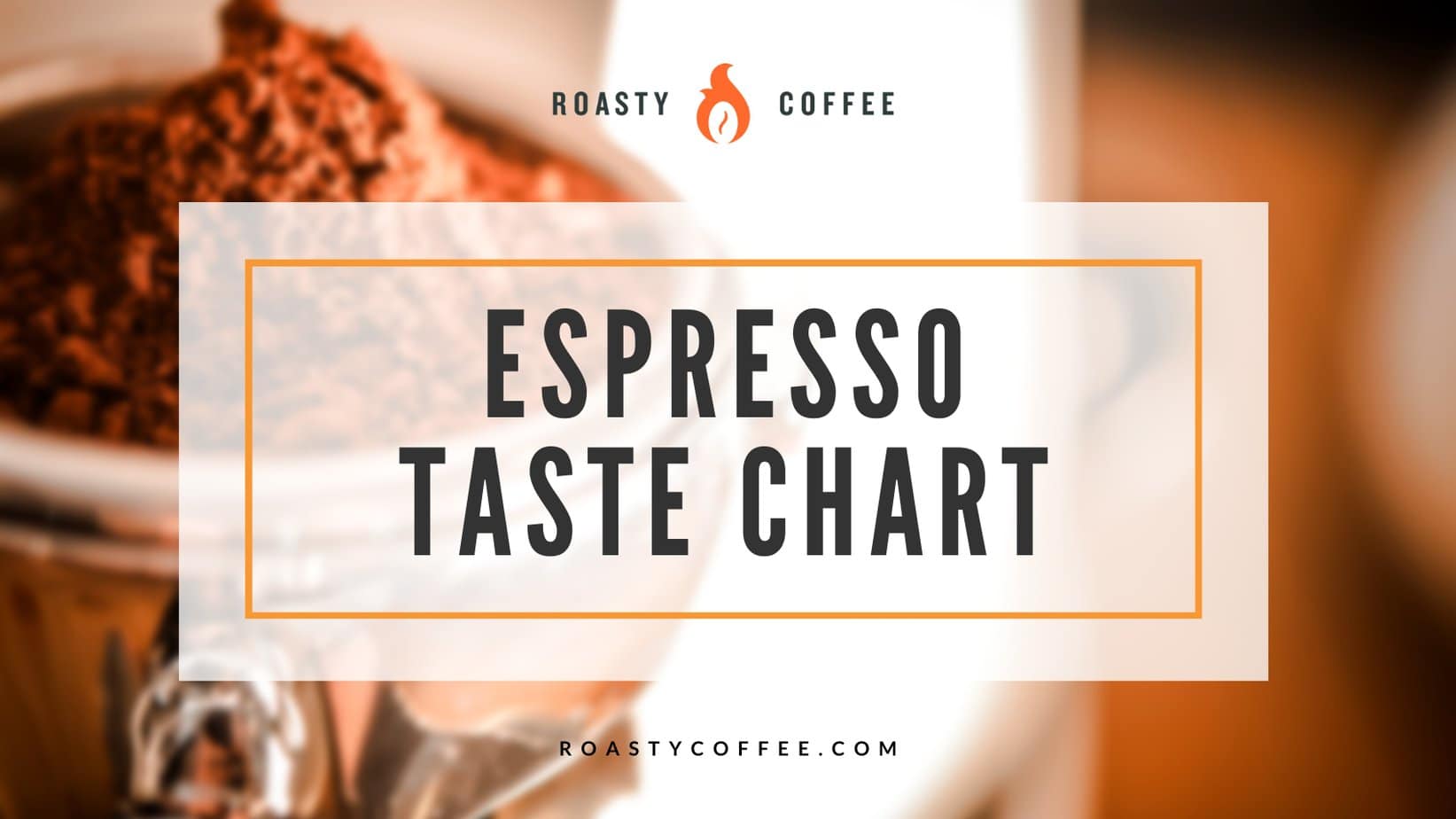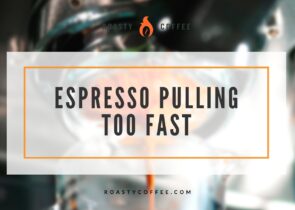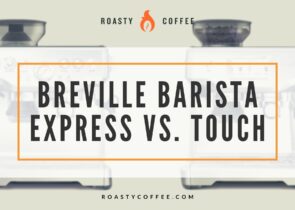If you’re new to brewing and tasting espresso, you should know that it doesn’t have to be as hard as it seems. Pulling a perfect shot of espresso requires a few adjustments here and there, but once you know what you’re doing, it will all fall into place.
While it’s easy to get espresso that’s bitter or sour, it’s just as easy to get it to taste delicious by extracting it in the right time, using the right amount of coffee, grinding beans to the perfect size, and giving the grounds a proper tamp.

Espresso Taste Chart
For a little bit of guidance, we’ve put together an espresso taste chart that can show you an overview of what you should adjust in order to get the perfect shot of espresso.

What to Look For When Tasting Espresso
There are a few things to look at when you’re tasting a shot of espresso and dialing in to get the best brew possible. Aroma, Body, Flavor, and Finish are all key factors to consider when tasting.
Aroma
One of the very first things that will tell you if your shot of espresso is bad or not is the aroma. Since a majority of what we taste actually comes from what we smell, this is definitely an important step.
Our taste buds only have receptors for things like bitterness, sweetness, and mouthfeel. The rest of what we experience comes from our noses.
This is why aroma is a very good indicator of whether your shot of espresso is a good one or could use some adjustments. You want a smell that’s rich and deep, not one that’s burnt or has a chemical essence to it.
Body
When it comes to the body of the espresso, you can examine the density and texture or mouthfeel of the shot. It can either be light and airy or dense and heavy.
To determine the body of an espresso shot, let it sit on your tongue for a bit and swirl it around before you swallow. Is it oily? Creamy? Juicy? Syrupy?
A lighter body can be found in beans that have floral or citrus notes. A heavier body might be found in beans that are shade-grown.
Flavor
The flavor of the espresso depends on the roast profile and the origin of the coffee itself. So, if you’re dealing with a darker roast, the flavor will be roastier and hold deeper notes. However, lighter roasts have more acidic and softer notes that represent the origin better.
That being said, the origin plays a bigger part in flavor than you might think. For example, coffee from Indonesia usually has smoky and earthy tasting notes, while coffee from Ethiopia has tasting notes that are brighter and more fruity, or even floral.
Taking the time to learn about where your coffee comes from can also teach you taste expectations based on origins and roast profiles.
When you’re taking the time to note flavors, begin with general identifiers such as fruity or toasty. From there, you can try to pinpoint what you might be tasting.
Finish
Once you’ve tasted your espresso and focused on the previous three factors, it’s important to think about the aftertaste of it. The finish will stay on your tongue and leaves a lingering taste that might be different from the initial sip.
You really want a good finish, as that’s what lasts moments after you’ve finished your espresso. You want it to be sweet and comforting, something that will leave a good lasting impression.
Anything dry and acidic is definitely not preferable to something delicious, sweet, and memorable. If you feel the need to drink some water after to wash away the taste, then you most likely do not have an ideal finish to your espresso.
How to Adjust the Taste of Your Espresso

If you’re not meeting the perfect tasting point of espresso, you might have to make a few adjustments to dial into the correct brew. Things such as preheating, grind size, dose amount, tamping, and brew time can greatly affect the pull of your shot by the smallest of changes.
Preheating For Espresso
Though this step might be looked over by some, depending on your espresso machine it’s usually best to preheat before you brew.
This can be done by letting your machine heat up to its full potential, leaving the portafilter locked into the group head, warming up your cup, and running water through your machine before pulling a shot.
Grind Size
When it comes to espresso, it’s important to freshly grind your coffee beans before you pull your espresso if you want to increase your chances of pulling a good shot.
More than that, the size of the grinds can make a big difference in the extraction of your espresso shot. Too fine a grind and it will be over-extracted, leading to a bitter taste. Too coarse and it will be under-extracted, making it watery and sour.
It may take some tinkering to get the perfect grind size, but most people use the consistency of granulated sugar as an example. Of course, this is just one of the many steps when it comes to dialing in espresso, so this will fluctuate.
Dose Amount
The dose, or amount of coffee in your portafilter, is another factor that will make a big difference when it comes to pulling the perfect shot of espresso.
A good range to look at when measuring coffee out for a double shot of espresso is between 14 – 18 grams depending on your espresso machine.
Tamping
After you’ve measured out your freshly ground coffee, you’ll need to make sure it’s properly tamped. This allows you to control the extraction by packing the grounds together and evening them out.
Simply set the portafilter on a stable and level surface and tamp the coffee down with an even pressure. With this step, the water goes through the ground coffee in a consistent manner and can make a big difference in how your shot tastes.
Brew Time
Keeping track of how long it takes to pull your espresso is the final crucial step in brewing the perfect shot. If you’re crafting a double shot, which is about 2 ounces of coffee, then it should take about 20-30 seconds of extraction time to achieve this amount.
A good shot will start dark and slowly layer into a lighter shade as the crema forms. There won’t be a break in the pour and you should be able to tell if it’s pulling too fast or too slow.
Tying it All Together
When tasting espresso, you’ll notice that there are different flavors as you go down the cup. This is why it’s important to take your time doing so. Moreover, the aroma is a vital thing to notice throughout.
If you can tell that your espresso isn’t the best that it could be, making some adjustments to your grind, dose, or brew time could really make or break the tasting process.
Overall, there are a lot of things that go into both brewing and tasting espresso. But, once you get the hang of it (with the help of a handy espresso taste chart), you’ll know how to dial in the perfect espresso shot like a pro!
Happy Caffeinating!







